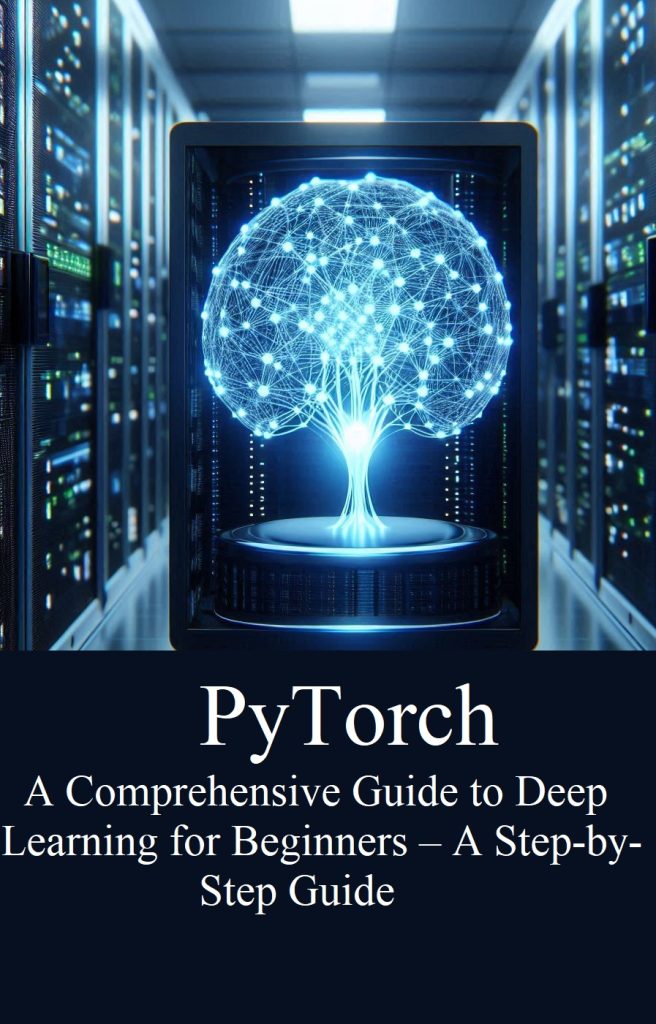Rewrite this article:
Construction and training models
PyTorch makes model building simple using the torch.nn module. You can define a neural network by subclassing nn.Module and implement the Before method for specifying how input data flows through the network.
import torch.nn as nnclass SimpleNN(nn.Module):
def __init__(self):
super(SimpleNN, self).__init__()
self.fc1 = nn.Linear(28*28, 128)
self.fc2 = nn.Linear(128, 10)def forward(self, x):
x = torch.relu(self.fc1(x))
return self.fc2(x)
Once the model is defined, you can use optimizers like Adam and loss functions to train the model.
optimizer = torch.optim.Adam(model.parameters(), lr=0.001)for epoch in range(5): # 5 epochs
for data, labels in trainloader:
optimizer.zero_grad()
outputs = model(data)
loss = criterion(outputs, labels)
loss.backward()
optimizer.step()
Computer vision with PyTorch
One of the most common applications of deep learning is computer visionwhich involves analyzing and interpreting visual data such as images and videos. PyTorch, combined with the torch vision library, provides powerful tools for tasks such as image classification, object detection and image segmentation.
Pre-trained models for image classification
PyTorch's torchvision.models module includes several pre-trained models like ResNet, VGGAnd AlexNet. These models can be adjusted to perform specific tasks.
import torchvision.models as models# Load a pre-trained ResNet model
model = models.resnet18(pretrained=True)# Fine-tune the last layer for 10-class classification
model.fc = nn.Linear(model.fc.in_features, 10)
Image preprocessing
Before feeding image data into a deep learning model, it must be preprocessed. Common preprocessing steps include resizing, normalizing, and augmenting images using torchvision.transforms.
from torchvision import transformstransform = transforms.Compose([
transforms.Resize((224, 224)),
transforms.ToTensor(),
transforms.Normalize(mean=[0.485, 0.456, 0.406], std=[0.229, 0.224, 0.225])
])
Natural language processing with PyTorch
Natural Language Processing (NLP) is another popular deep learning application, used for tasks such as text classification, sentiment analysis, and machine translation. PyTorch, in conjunction with libraries like torch text And Hugging Face Transformersfacilitates the creation and training of NLP models.
Text preprocessing
Text data must be tokenized and converted into a format that can be processed by a deep learning model. PyTorch provides tools to tokenize text and convert it into digital representations.
from torchtext.data.utils import get_tokenizertokenizer = get_tokenizer("basic_english")
tokens = tokenizer("This is an example sentence.")
print(tokens) # Output: ['this', 'is', 'an', 'example', 'sentence']
Creating language models
In PyTorch, you can implement models such as recurrent neural networks (RNN) or transformers for language modeling tasks. Here is an example of an RNN for text classification.
class TextRNN(nn.Module):
def __init__(self, vocab_size, embed_size, hidden_size, output_size):
super(TextRNN, self).__init__()
self.embedding = nn.Embedding(vocab_size, embed_size)
self.rnn = nn.RNN(embed_size, hidden_size, batch_first=True)
self.fc = nn.Linear(hidden_size, output_size)def forward(self, x):
embedded = self.embedding(x)
output, _ = self.rnn(embedded)
return self.fc(output[:, -1, :])
Advanced Topics in Deep Learning with PyTorch
Once you've mastered the basics, PyTorch offers several advanced features that push the boundaries of deep learning, including generative models, reinforcement learningAnd model deployment.
Generative models
Generative models like Generative Adversarial Networks (GAN) And Variational autoencoders (VAE) are designed to generate new data similar to the training data. The flexibility of PyTorch makes it easy to implement both types of models.
Reinforcement learning
Reinforcement learning (RL) is an area of AI in which agents learn to make decisions by interacting with an environment. PyTorch, as well as libraries like OpenAI Gymprovides tools to implement RL algorithms such as deep Q-learning (DQN) and political gradients.
import gymenv = gym.make("CartPole-v1")
state = env.reset()for _ in range(1000):
action = env.action_space.sample() # Random action
state, reward, done, _ = env.step(action)
if done:
state = env.reset()
Model deployment
Once your model is trained, you can deploy it for real use. PyTorch offers several deployment options, including TorchScript for serializing models and ONNX for interoperability between different deep learning frameworks.
# Export a PyTorch model to ONNX
torch.onnx.export(model, input_tensor, "model.onnx")
Conclusion
Mastering PyTorch provides you with the tools to build cutting-edge deep learning models for a wide range of applications, from computer vision to natural language processing and beyond. By understanding the fundamentals of deep learning, leveraging the powerful features of PyTorch, and exploring advanced topics like generative models and reinforcement learning, you can become proficient in developing, training, and deploying solutions of deep learning that have an impact in the real world.
Source link
